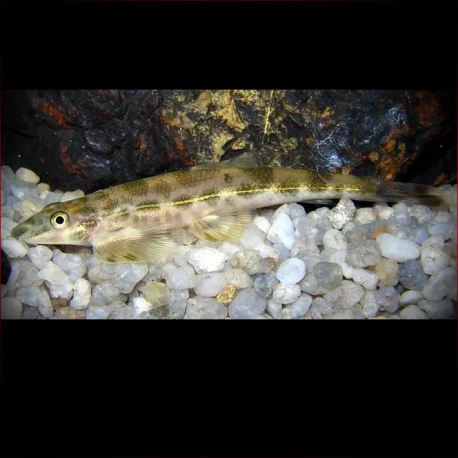More info
Datasheet
| Minimum Tank Size | 60 litres / 15.85 US gallons |
| Maximum Size | 6.5cm / 2.56inches |
| Temperature | 20°C / 68.00°F - 25.5°C / 77.90°F |
| Hardness | 1.01dgH / 18ppm - 12.05dgH / 215ppm |
| pH | 6.0-7.5 |
General Description
Homalopteroides stephensoni is a poorly-known species in the aquarium trade, distinguished by specific physical characteristics such as a sub-inferior mouth with thin barbels, a scaleless belly, and a unique patterning of keeled scales on its body. This species, also known as the 'lizard' or 'gecko' loach, is part of the Balitoridae family, exhibiting a flattened body and specialized fins suited for life in fast-flowing waters. It possesses a powerful suction cup-like ability, enabling it to cling to solid surfaces and navigate rocky environments with ease.
Aquarium Setup
For optimal care, it is crucial to maintain clean and well-oxygenated water in a tank environment for H. stephensoni. A high-volume filter with a turnover rate of 10-15 times per hour is recommended. The aquarium should contain gravel or sand substrate layered with water-worn rocks and pebbles. Adding driftwood, roots, and branches provides additional enrichment. Although not typical in its natural habitat, the inclusion of aquatic plants like Microsorum, Crinum, and Anubias species is beneficial for the fish's well-being. Stable water conditions are essential, emphasizing the importance of a mature tank setup.
Behaviour
This species tends to reside in aggregations in its natural habitat, displaying bolder behaviors when kept in groups of six or more. While not inherently aggressive, H. stephensoni has specific tankmate requirements due to its unique needs. It interacts intriguingly within its group, showcasing fascinating social dynamics. Careful consideration of tankmates and group size is advised to observe this loach at its best behavior.
Feeding and Diet
H. stephensoni is a specialized micropredator in the wild, feeding on small crustaceans, insect larvae, and various invertebrates. In captivity, a diet comprising live or frozen foods like Daphnia, Artemia, and bloodworms is essential for maintaining its health. While this species may accept sinking dried foods, regular offerings of live or frozen prey are paramount. When acquiring emaciated specimens, providing ample and suitable food sources without competition is crucial for their recovery.
Reproduction & Dimorphism
Limited information is available regarding the reproductive behavior of H. stephensoni in aquarium settings. In nature, it is presumed to be a seasonal spawner, but no documented reproduction has occurred in captivity. Sexually mature females typically exhibit a slightly larger and fuller body compared to males, indicating sexual dimorphism within the species.
Habitat and Distribution
Found in swiftly flowing streams and headwaters with clear, oxygen-rich water, H. stephensoni thrives in environments characterized by gravel, rocks, and boulders coated with biofilm. While juveniles may inhabit slower-moving areas with gravel substrates, adults prefer fast-flowing riffles. This species is native to specific regions in Borneo and parts of Malaysia, including the Mahakam River and Danau Sentarum National Park.

